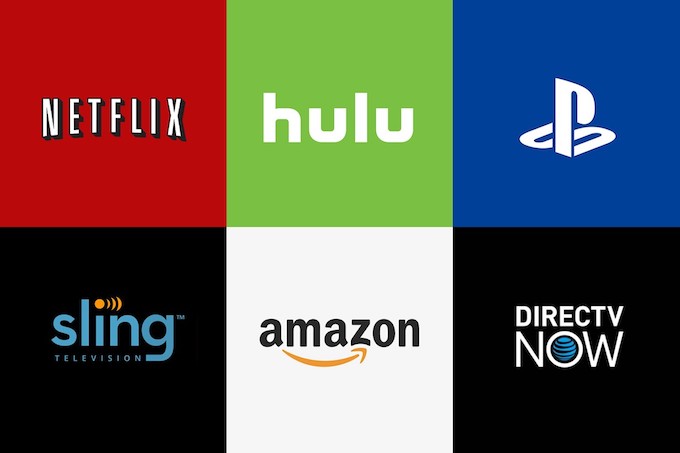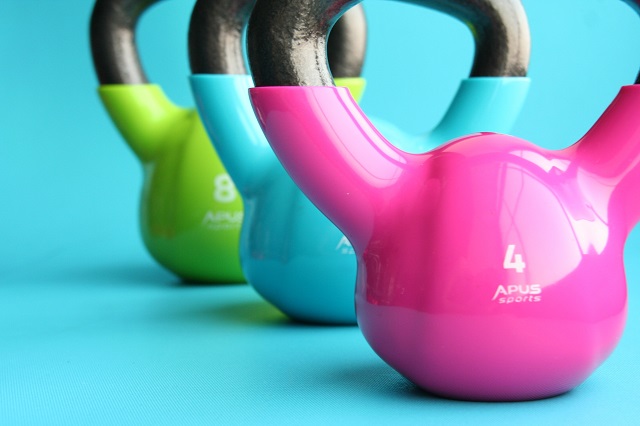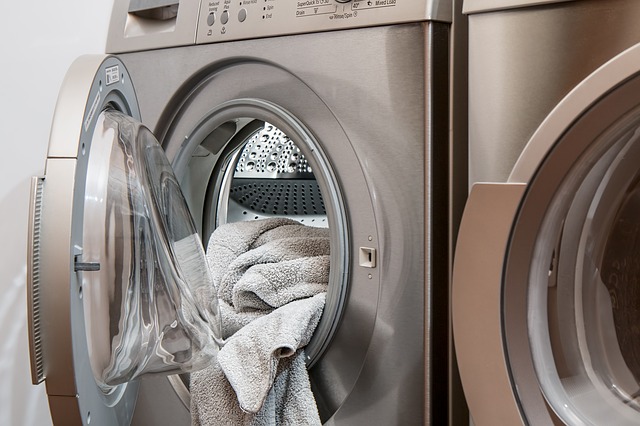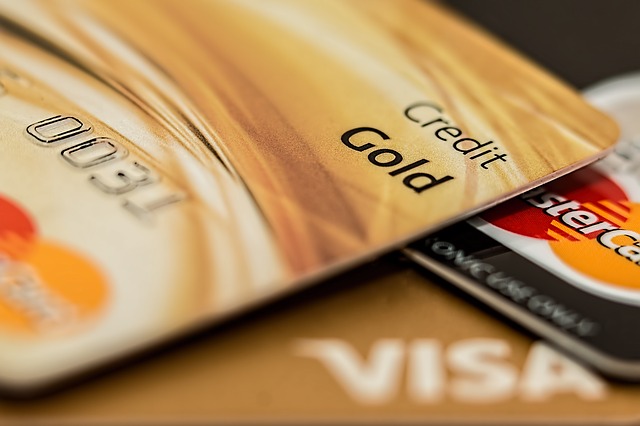25 Surprising Ways You Are Wasting Money
40 Best DIY Gift Ideas for Any Occasion
50 Gorgeous Handcrafted Wreaths on Etsy
10 Festive Christmas Simmer Pot Recipes
40 Dollar Store DIY Fall DÉcor Ideas
40 Easy Rotisserie Chicken Shortcut Meals
60 Christmas Cookies for Every Taste
Gift Guides for Everyone on Your List
55 Best Harry Potter Party Hacks
Make the most of fall and the holiday season with our best décor ideas, recipes, gift ideas & more.
SEe What's Trending
Learn More ›
Clean everything in your home from your clothes and sheets to your shower curtain, vents - even the inside of your washing machine - with simple short-cuts using all-natural cleaning products.
Available in paperback and
Kindle. editions.
Get the cleaning hacks book
Natural Cleaning
Home DÉcor
Christmas
Thanksgiving
Halloween
Fall
Recipes
Top Categories
More About Me ›
Hi, I'm Sarah! I share all the best recipes, lifestyle tips, décor ideas & more to help you live your best life, naturally. Come for meal ideas and life hacks, and stay for updates and community.
sarah blooms!
welcome to
Gift Guides
With these Top 25 Ways You Are Wasting Money, you can learn how to tighten your budget to make the most of your income!

Even if you think you have your finances under control, you still may be wasting thousands of dollars every year on unnecessary expenses!
Imagine what you could do with all that money – save it, pay off debt, buy something you really want or need. Don’t fret, though, because I’m here to help!
These Top 25 Ways You Are Wasting Money Without Even Realizing It will help you identify where you’re wasting your hard earned cash, so you can get your finances back on track in no time!
More smart money tips:
20 Ways to Score the Best Deals at Aldi
24 Easy Ways to Trick Yourself into Saving Money
25 Easy Money Hacks That Will Simplify Your Life
25 Cheap Instant Pot Meals Under $10
Pin for later!

Top 25 Ways You Are Wasting Money Without Even Realizing It
1. Small Daily Expenses
You might not think that daily Starbucks latte, breakfast sandwich, or lunch out is a big deal, but these small expenses can really add up!
Even if you buy just one basic grande sized Starbucks latte a week, that adds up to almost $200 per year!
Go every workday? That’s almost $1000!!!
And these figures don’t even include tax and tip. Take the time to add up your small weekly purchases like these, and you might be surprised by how much money you’re wasting.
Believe me, I get it! Starbucks specialty coffees are delicious, and fast food is convenient – I enjoy these things, too!
But when money is tight, or you’re trying to save for a big purchase or even a house, even small luxuries like these can get in the way of your dreams and seem much less worth it in the long run.

2. Impulse Buys
According to a CreditCards.com survey, 5 out of 6 Americans admit to buying items on impulse.
These purchases are especially problematic because when you buy on impulse, you often end up with things you don’t really want or need and, thereby, waste your money.
You’re also more apt to spend more money or buy an unreliable item, since you haven’t taken the time to do your research before buying.
So what can you do? Depending on how much you like to spend money, you may be feeling powerless when it comes to impulse spending, but you can actually beat this bad habit with a little discipline and motivation and some smart strategies.
Always prepare a list when you go shopping, and stick to it!
Follow the 30-Day Rule. If you want to buy something non-essential, such as the latest iPhone, video game, clothes, etc., but aren’t sure you should spend the money, wait a while – like 30 days – before purchasing it.
Chances are, if you wait that long, you won’t want the product anymore, and you won’t waste money on something you don’t really need. Even waiting as little as 24 hours may be enough for you to conquer the impulse to spend your hard earned cash.

3. The Lottery
One of those impulse purchases might be lottery tickets. Buying a ticket here and there – say when the jackpot gets really big – isn’t that devastating to your finances.
It does still add up, but the real problem with playing the lottery is when you do it regularly – now that really adds up!
The odds of winning a worthwhile amount of money are so small, it’ll probably never happen to you.
I get it, just dreaming of that windfall is enough to make many people happy and hopeful for the future, but honestly, you really are better off saving that money.
Chances are, you’ll probably end up with more money in the end.
4. Extended Warranties
Buyers are offered extended warranties on everything from power tools and electronics to cars.
You may think you’re being a responsible consumer by protecting your purchases, but the FTC warns that most extended warranties aren’t a good buy.
Many of these warranties offer coverage already provided by the manufacturer for free, and the fine print often excludes the most common problems.
A better bet would be to start a savings account to cover any issues with your purchases.
You’ll earn interest if you put your money in a high-yield savings account, and if you don’t need to use that money, it’s all yours!
5. Unclaimed Rebates
About 40-60% of rebates are never redeemed in the U.S. – that adds up to around $500 million in unclaimed rebates every year!
It’s easy to see why companies offer rebates instead of just putting the items on sale.
You’ll be enticed by the lower price, so you’re more apt to buy, but if you never redeem the rebate, that money – YOUR MONEY – stays in their hands.
The best way to successfully claim a rebate is to submit it right away.
The purchase is still fresh in your mind, so the impact that purchase had on your finances will still be fresh in your mind and you won’t have to worry about redeeming the rebate before the deadline.
To be safe, make copies of all your receipts and paperwork you’re sending to the company, in case there are any issues, and save any packaging in case you need it.
Also, be sure to check your mail carefully, so you don’t mistake your rebate for junk mail and just toss it.
6. Grocery Store Purchases
If you’re not meal planning, you’re probably wasting tons of money on groceries.
When you shop for food without a plan, you’re susceptible to buying things you don’t want or need and much of that food ends up in the trash.
According to the National Resource Defense Council, the average U.S. household throws away $1,350 to $2,275 worth of food every year!
To stop wasting money on food, make weekly meal plans, and always shop from a list.
Never shop while you’re hungry, and don’t throw away leftovers – take them for lunch or freeze them for quick meals on nights when you don’t feel like cooking.
You can also save money by shopping at discount grocery stores like Aldi and using cash back apps like Checkout 51 and ReceiptHog.

7. Convenience Foods
Convenience foods like pre-washed lettuce, cut fruits and vegetables, and prepared foods like TV dinners, granola bars, and pre-packed snacks cost way more than their whole food counterparts.
To avoid wasting money, buy a salad spinner and wash and cut your own lettuce, cut your own fruits and veggies, and make meals and snacks like granola bars from scratch, or buy snacks in bulk and portion them yourself.
Also, be sure to avoid the vending machine at work, which offers unhealthy, processed foods at the highest prices.
Instead, pack healthy meals and snacks for work to help your wallet and your waistline!
8. Name Brands
I used to prefer name brands for everything from food and beauty care to prescription medications until I found out that generic brands are just as good – and sometimes even better! – than their name brand counterparts.
In fact, many name brands and generics are made in the same factories, and the only difference is in the packaging!
Now, I prefer generic brands for almost everything I buy and save loads of money (up to 80%) in the process.
Like generic brand foods? Check out these Aldi money saving tips to help you save thousands on groceries every year!
9. Eating Out
If you eat out often, you’re wasting tons of money on food, and that spending can really add up quickly.
A $3 coffee or $10 meal may not seem like a lot, but imagine what that figure could be if you add up all your restaurant purchases for an entire year!
If you don’t want to sacrifice having fun, just set a spending limit, and stick to it. The cash envelope system is an excellent tool for food spending.
Set a weekly or monthly spending limit, and use cash for those purchases. You can’t overspend because when you run out of money, you’re done for the month.

10. Bottled Water
Drink tap water instead of bottled to potentially save thousands of dollars per year! Don’t like the taste of your tap water? Get a water filter faucet mount or pitcher.
Sure, you have to spend money to buy filters, but they cost far less than buying bottled water all the time.
Filters are better for the environment, too, because you won’t be sending tons of bottles to the landfill or recycling center (recycling costs money and uses energy and natural resources, too).
I like to carry refillable bottles of water with me to work and while running errands and visiting friends and family, so I don’t have to buy water when I’m out or drink anyone’s nasty-tasting chlorinated water.
Check out this self-filtering water bottle you can refill just about anywhere!

11. Flavored Drinks
To save even more money, you may want to stop buying drinks altogether!
Juices and soda are not only high in sugar and empty calories, they’re also pretty expensive, especially when you buy them regularly over time.
Drink tap water, carry refillable water bottles when you’re out and about, and learn how to make your own healthy and inexpensive probiotic drinks to improve your gut health and immune system.

12. Cable TV
Cable and satellite television services can seem like a good deal when you first sign up.
Initially, they offer you lower monthly payments and bundling deals like TV, phone, and Internet, but then, your promotional period ends, and you’re easily spending $100-200/month.
Suddenly, those traditional companies don’t look so great anymore.
Luckily, times have changed, and most consumers have an ever-expanding list of alternative options that offer great programing at much lower prices.
If you’re tired of paying ridiculous monthly rates for cable and satellite and dealing with their awful customer service, consider switching to one or more streaming services.
To stream straight to your TV, you’ll need a high speed internet connection and a smart TV or streaming device like a Roku Streaming Stick, Apple TV, or Amazon Fire TV Stick
. You can also stream straight to your computer, tablet, or smartphone without a streaming device.
Then, you can subscribe to streaming services like Netflix, Hulu, Acorn (UK TV shows), Amazon Prime, HBO Max, Beachbody On Demand, and more.
There are also great live TV and sports channel offerings that make cutting cable totally painless, including Hulu Live TV, Sling TV, Playstation Vue (you don’t need a Playstation), DirecTV Now, fuboTV, and more.
For more information on these streaming services, check out this comparison article.

13. Telephone Service
You might be thinking, “I can’t cut my cable or satellite TV because I have bundled services!”
Companies like Comcast, DirectTV, Dish Network, CenturyLink, and Verizon make you think you’re getting a great deal when you bundle services like TV, Internet, and phone, but compared to what’s available, you may be paying way too much!
Consumer Cellular
I switched to Consumer Cellular over 5 years ago, and I’m so happy with their service!
They have the best prices I’ve found, great nationwide cell phone and data coverage on AT&T’s network, no contracts, and fantastic customer service!
You can buy a phone through them, or bring any unlocked cell phone with you.
They let you make 0% APR payments on expensive Smartphones if you need to, and if you already have a cell phone, they’ll send you a SIM card to connect to their plans for FREE!
They have the latest cell phones, including iPhones. Plans start at $20/month for unlimited talk and text and 1GB of data. Don’t need data? Just unlimited talk and text costs $15/month.
Plus, you can buy a wireless home phone base and connect your home phone for the cost of an added line ($15/month)!
Xfinity Mobile
If you already have Comcast Xfinity Internet service, check out Xfinity Mobile.
Xfinity Mobile is only available for current Comcast Internet Subscribers, but if you don’t have Comcast Internet, you can sign up for it now and take advantage of their mobile service, which offers FREE Unlimited talk and text and 100 MB of data included with your Internet service!!
You only have to pay for data, which is very affordable at $45/line for unlimited data, or starting at $15/GB when you pay by the Gig. Unlimited data plans are $30 each when you add a line.
Plus, you can switch between per gig and unlimited data plans any time depending on how much data you use.
Just like Consumer Cellular, they let you make 0% APR payments to buy their Smartphones, including the iPhone, or you can bring your own unlocked device.
If you use a lot of data, you’ll end up paying about the same as Consumer Cellular, but if you don’t use much data, you could save a lot of money with this cell plan.
Another benefit over Consumer Cellular is you can add an Apple Watch to your cellular plan.
14. Unused Memberships
The average gym membership costs between $40 and $50 per year.
Add in the initiation fee, and you might be spending as much $800 a year! Yet, unbelievably, around 67% of people with gym memberships never set foot in a gym.
Take an inventory of all your subscriptions. This includes your gym membership, magazines, TV services like Hulu and Netflix – all your recurring expenses.
If you don’t get value from these memberships, cancel them. Do you only watch The Crown on Netflix, or simply don’t have time to watch TV right now? Why keep your membership active the rest of the year?!
Cancel the subscription while you’re not using it. You can always join again later.

15. Laundry
Doing your own laundry at home is far cheaper than taking clothes to the cleaners, but you’re still probably spending way too much.
You don’t need to pay premium prices for name brand detergents when cheaper brands work just as well, or you can make your own detergent for pennies per load.
I use Charlie’s Soap. It’s a little more expensive up front, but it lasts me several months because I only use a tiny bit per load.
Bonus: Charlie’s Soap works so well, my clothes have never been cleaner!!
Plus, fabric softeners are unnecessary, and so are dryer sheets, especially when you can use reusable wool dryer balls in the dryer to help fight static and dry clothes faster.
You can also wash clothes on cold instead of hot or warm – cold water gets clothes just as clean while saving you money on water and electricity.
Also, consider hanging your laundry to dry instead of putting everything in the dryer, at least in the warmer months, to save even more on your energy bills.

16. Paper Towels
The average family who uses just two rolls of paper towels a week spends around $182 per year and isn’t doing much for the environment either.
You might think you’re saving loads of money by buying a cheaper brand, but this is one product where knock-offs really aren’t as good as the more expensive brands, since you need to use far more of the cheap brand.
I recommend not using paper towels at all, if possible. Use absorbent cloth towels to soak up spills, and all-natural, germ-killing microfiber cloths like eCloths for environmentally-friendly and frugal cleaning.
17. Electricity
Electricity is a huge money waster! How many of us don’t always turn the lights off when we leave a room, and even if you do, you’re probably still wasting money on phantom electricity.
Phantom electricity is the power used on all your devices that are plugged in but not in use. Yes, even if your computer or TV is turned off, it’s still using power if it’s plugged in, and it’s costing us mega-bucks.
The U.S. wastes around $19 billion on phantom electricity, and each user spends about $20 to $30 more each month because of it!
Take a second to unplug your electronics when you’re not using them, or buy a power strip to turn off power with the quick push of a button.

18. Late Fees
Being late with payments can cost a lot of money.
Pay your credit card late, and they’ll hit you with a late fee (usually between $15 and $35), then report your late payment on your credit report and jack up your interest rate!
Paying your mortgage, rent, utilities, and even returning library books after the due date often results in late fees.
If you have trouble getting payments out on time, set up automatic payments. If you make a one-time mistake, contact the company.
They may be willing to waive penalties if you usually make payments on time.
19. Loan Interest
Credit card debt is a slippery slope, and it’s so easy to get in over your head. With high interest rates, you can make loads of payments and still see little change in your balance.
On average, American households had credit card debt totaling around $16,425 in 2017. At an average interest rate of 18.76%, the average household is paying around $1,292 each year in credit card interest.
Making minimum payments of $300, it would take over 10 years to repay the debt with interest payments totaling $21,000! You’ll never be able to build wealth wasting that much money!
That’s why you need to pay off those debts – especially high interest credit card debts – as quickly as possible.
Debt Snowball vs. Debt Avalanche
There are a few ways you can pay off debt, but the most popular are the debt snowball and debt avalanche.
With the debt snowball, you list all your debts from smallest to largest. Then, you focus on paying off the debt with the smallest balance first with any extra money, while paying the minimum on all your remaining debts to keep them current.
Once the smallest debt is paid off, you take that payment plus any extra money and apply it to the next smallest debt, and continue following this plan until you’re debt free.
The debt avalanche is similar except you sort your debts by interest rate. Pay off debts with the highest interest rate first to save money on interest.
So which method is better? It’s a mental game, really. Some people find motivation in paying off their smallest debts first, which helps them continue on to the next debt and so on.
Other people would rather just save the interest money – it just depends on your personality and what might motivate you to pay of your debt in the fastest way possible.
Open a 0% APR Credit Card
With good credit, you can open a new card and take advantage of balance transfer deals that offer generous 0% APR introductory periods for up to 18 months to help you clear your debt much faster.
Just be sure to watch out for balance transfer fees, which are usually around 3% of the amount you’re transferring to the new card.
PRO TIP 1: Some card companies waive the balance transfer fee, which can be a great deal when you’re having money problems.
I also recommend looking at online reviews to vet the credit card company before making any commitments.
PRO TIP 2: Even if you don’t want to open a new credit card to pay off existing debt, at least call your credit card companies to try to negotiate a lower APR – it can’t hurt and might help.
Then, Stay Out of Debt
Once you have all your debts paid off, do your best to stay out of debt if you can.
Sure, things happen, but if you’re racking up debts on wants instead of needs, you may need to find a way to control your spending if you want to be financially free for life.
Instead of following our spendthrift culture, learn how to save money and wait to buy what you want rather than charging on your credit card.
Instant gratification might be fun now, but it can lead to money stresses later on.

20. Bank Fees
According to the Consumer Financial Protection Bureau, Americans pay an estimated $17 billion yearly just in overdraft fees. And banks routinely charge way more than that.
With ATM fees, monthly maintenance fees, and other bank costs, you can easily spend $1,000 on average over a decade!
If your bank charges loads of fees, switch to a consumer-friendly bank with features like free ATM use, reimbursement if you use another bank’s ATM, and no minimum balance requirements.
21. Savings
Make your money work for you by putting it in a high-yield savings account. I recommend setting aside at least $1,000 for emergencies and more if you can afford it.
Once you have saved at least $1,000 above your emergency fund, consider more long-term investment options like CD’s, the stock market, or increasing your retirement contributions.
These savings options may carry more risks than a regular savings account, but they can also give you much higher returns.
Looking for painless ways to save money? Check out 24 Easy Ways to Trick Yourself into Saving Money.

22. Unclaimed 401(k) Matches
Even if you think you can’t afford it, you need to contribute at least as much as your employer will match into your 401(k), or you’re just throwing away free money.
Adding more than the employer match is an even better idea, since most workers don’t save nearly enough for retirement, and Social Security doesn’t pay nearly enough to live on.
23. Basic Tax Preparation
If your taxes aren’t that complicated, you don’t need to pay a tax preparer hundreds of dollars per year to do your taxes. Just use a free or low-cost online tax software program like HRBlock.com.
I use the H&R Block software every year, and it’s so quick and easy! The program walks you through all the steps to get you the maximum tax refund – guaranteed!
24. Driving Too Fast
Have you ever noticed that most drivers seem to treat the speed limit as a speed minimum??
I admit, I have a really long commute to work and am definitely guilty of driving too fast, but that also means I’m wasting a ton of money – and you probably are, too.
Not only do you have to worry about getting a super expensive speeding ticket, but there are other costs to keep in mind, as well. If you get a ticket, your insurance premiums may go up.
Plus, speeding causes your car’s gas mileage to decrease by as much as 30% on the highway and 40% in the city. On average, for every 5 miles over 50 MPH you go, you pay about $0.18 more per gallon of gasoline, which doesn’t sound like a lot, but, again, adds up over months or years.
Speeding also increases your risk of collision, which can get incredibly expensive, especially if you’re at fault.

25. Premium Gas
Premium gas typically costs $0.20 to $0.40 more per gallon than regular, and it may not be necessary even if your car’s owner’s manual recommends it.
Modern engines are designed to protect themselves, so most cars do just fine with regular gas.
To see if you can switch to regular, check out online resources like Edmund’s Premium Recommended and Premium Required vehicle lists.
If your car really does need expensive premium gas, consider getting a car that doesn’t require it when you buy your next vehicle.
When you’re trying to save money, pay off debts, and build wealth, the last thing you need is to waste your hard earned cash.
These Top 20 Ways You Are Wasting Money Without Realizing It will help you identify where you might be wasting money, so you can get your finances back on track in no time!
What do you think of these 20 Surprising Ways You Are Wasting Money Without Realizing It? Can you think of other common ways we might waste our money?
Please share your thoughts in the comments below!
Related Posts:
20 Ways to Score the Best Deals at Aldi
20 Easy Side Hustles You Can Start Today
24 Easy Ways to Trick Yourself into Saving Money
25 Cheap Instant Pot Meals Under $10
25 Easy Money Hacks That Will Simplify Your Life
30 Brilliant Ways to Eat Healthy on a Budget
Pin for Later:

August 14, 2018
by
Sarah
Join the Community
Subscribe now.
Want insider tips, latest trends, special offers, and a dash of magic ✨ in your inbox?
Copyright 2017-2025 • Sarah Blooms • Design By Piperlane
Copyright 2017-2025 • sarah Blooms
Design By Piperlane • Privacy Policy
View the Comments
Add a Comment
Comments will load here